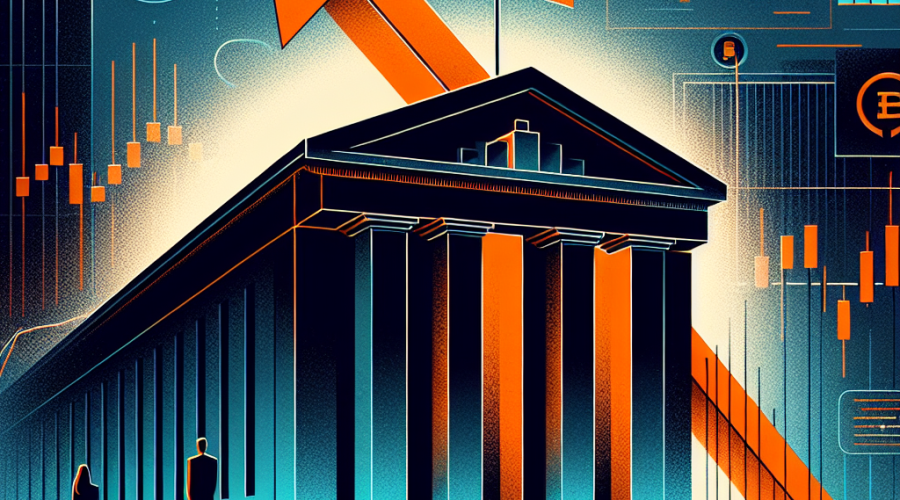On Friday, the cryptocurrency markets experienced an intense sell-off, erasing billions in value and triggering widespread concern among investors. However, experienced traders and analysts are now suggesting that this dramatic correction may actually signal the beginning of a new bull run. As the dust settles, market sentiment remains deeply divided, with some seeing only trouble ahead while others point to new opportunities on the horizon.
The Market Meltdown: An Unprecedented Crypto Liquidation
The latest crash came in the wake of major geopolitical developments, most notably the announcement of a 100% tariff on Chinese imports by former U.S. President Donald Trump. This pronouncement rattled financial markets across the globe, with cryptocurrencies bearing the brunt of volatility. Bitcoin, the largest digital asset by market capitalization, plunged more than 10%, dropping from its recent highs to around $102,000. At its nadir, the crypto market suffered over $19.3 billion in liquidations—far surpassing the losses of past crises, such as the $1.2 billion liquidated during the 2020 COVID-19 crash and the $1.6 billion lost in the FTX collapse.
With Bitcoin’s value reeling and altcoins taking even sharper losses, the fear index for crypto sentiment surged. Headlines warned of further declines and possible existential threats to the industry’s stability. Investors questioned whether this was merely a correction or the start of a deeper bear market.
Voices of Optimism: Why Some See a Bull Run Brewing
Contrary to the doom and gloom, prominent figures in the crypto sphere see the recent downturn as a healthy and much-needed reset. Crypto trader Alex Becker, in a widely watched video, labeled the sell-off as a “massive overreaction.” He highlighted the fact that the market had grown complacent after a year-long rally in Bitcoin that left most altcoins lagging. According to Becker, the frustration of retail traders—many of whom waited impatiently for quick gains—created a powder keg. When the correction finally came, it was disproportionately intense, as impatient investors rushed for the exits. Becker warned that selling at this stage might be “the stupidest thing you could ever do,” suggesting that now is, in fact, the time to buy.
Samson Mow, founder of Jan3 and a noted Bitcoin advocate, echoed these sentiments, posting on social media that “It’s time for Bitcoin’s next leg up,” further fueling the argument that the worst is over and a new rally is imminent.
Market Fundamentals: Are They Intact?
One of the most significant points made by bullish analysts is that the crash, while spectacular in scale, did not fundamentally alter the long-term thesis for Bitcoin or cryptocurrency as a whole. The mass liquidation event, while painful, “reset everything,” according to Becker. Many over-leveraged positions have been wiped out, and the market’s excesses have been purged. This cleansing, though dramatic, can pave the way for more sustainable growth and renewed buying interest as new money enters at lower price points.
Further supporting the bullish case, Bitcoin’s recent price action saw it reach an all-time high of $125,100 earlier in the week before the correction. Although this figure is still well below ambitious year-end targets like BitMEX co-founder Arthur Hayes’ prediction of $250,000, it demonstrates strong upward momentum and ongoing investor interest. Market research director Joe Burnett and other analysts have also maintained high expectations, indicating that the path to those lofty valuations may simply be longer but still within reach.
The Role of Investor Psychology and Market Sentiment
One theme recurring in analyst commentary is the outsized role of impatience and emotional trading in amplifying volatility. As Becker noted, many retail investors have grown unwilling to wait for sustained gains, leading to panicked selling on any sign of trouble. This frenetic environment enables market makers to drive prices both up and down with relatively modest capital, resulting in exaggerated moves in both directions.
Benjamin Cowen, a crypto analyst known for his data-driven approach, shares Becker’s short-term optimism, predicting that Bitcoin will continue climbing in the coming weeks. He points to metrics such as Bitcoin Dominance—which surged past 60% during the crash—as evidence that the flagship cryptocurrency is consolidating its leadership and may stabilize before making another upward move.
However, not everyone is ready to call the bottom. Economist Timothy Peterson offers a more cautious view, forecasting a “cooling off period” of three to four weeks before Bitcoin resumes its rally. He argues that the asset may appreciate at a slower pace than before, reflecting a more measured approach by investors now licking their wounds from the recent volatility.
Sentiment Indices Reflect Widespread Fear—but Is It Overstated?
One of the most widely-followed sentiment gauges in crypto, the Fear & Greed Index, slipped into “Extreme Fear” territory after the market correction, registering a score of 24. Traditionally, extreme fear across markets is interpreted as a potential contrarian buy signal, based on the notion that widespread panic can precede major reversals.
At the same time, industry insiders caution that soft sentiment can create a self-fulfilling prophecy, with nervous investors holding back from re-entering or doubling down on the market. This dynamic can slow the recovery and even extend the pain if new negative headlines emerge.
Market Cycles, Macroeconomic Tailwinds, and Geopolitical Risks
Beyond technicals and sentiment, it’s vital to recognize the macroeconomic and geopolitical forces influencing the crypto sector. The announcement of sweeping tariffs on Chinese goods sent shockwaves through global trade and affected risk assets everywhere. In a world still adjusting to post-pandemic supply chain disruptions, persistent inflation, and shifting monetary policies, such geopolitical shocks tend to amplify volatility.
Nevertheless, major crypto supporters argue that these external shocks do not negate the fundamental appeal of blockchain technology or the long-term role of cryptocurrencies as alternative stores of value. To many, the recent correction represents an opportunity to build positions ahead of future catalysts—such as the upcoming Bitcoin halvings, institutional adoption, and evolving regulatory clarity across key jurisdictions.
Looking Forward: What to Expect Next in the Crypto Markets
As the market begins to stabilize, expert opinion remains split on what lies ahead. Bullish analysts point out that most corrections of this magnitude have historically been followed by strong recoveries, especially when fundamentals remain intact. The purging of over-leveraged positions typically prepares the ground for a healthier, longer-term uptrend.
Others, though, warn that the market could still see additional volatility as investors process the aftermath of the crash and as external economic risks remain high. The “cooling off period” predicted by Peterson and others could see a period of relative calm before the resumption of a more sustainable rally, albeit potentially at a gentler upward trajectory than the parabolic spikes that characterized previous cycles.
Ultimately, the fate of the crypto bull run will depend on a combination of factors: whether Bitcoin can reclaim its recent highs, how quickly sentiment shifts from fear back to optimism, and whether additional regulatory or macroeconomic shocks shake investor confidence again.
Key Takeaways for Investors and Traders
For those navigating the recent chaos, there are some critical lessons to keep in mind:
- Corrections are normal: Even in bull markets, intense drawdowns can occur, often driven by emotional trading and leverage. These episodes, while unsettling, can cleanse excesses and lead to renewed growth.
- Patience is a virtue: The impatient pursuit of rapid gains often leads to disastrous results, especially during high-volatility periods. Those who can weather the storm and stick to their strategies may ultimately fare best.
- Watch key sentiment indicators: Indices like the Crypto Fear & Greed Index can help identify potential inflection points and guide decision-making, though they are not foolproof.
- Stay informed on macro trends: Geopolitical news, monetary policy changes, and global economic shifts can have outsized impacts on digital assets.
Conclusion
The recent crypto market crash was severe, both in terms of lost value and investor anxiety. Yet, seasoned voices within the community argue that the storm has “reset” the playing field, burning off excess speculation and preparing the way for further upside. Whether this marks the true beginning of the next great crypto bull run remains to be seen. What is clear is that the world of digital assets remains as volatile and captivating as ever—and for those willing to withstand the turbulence, potentially as rewarding.


















